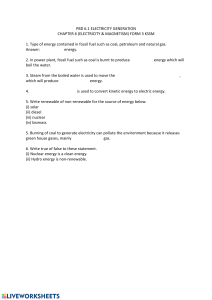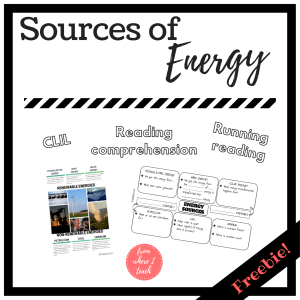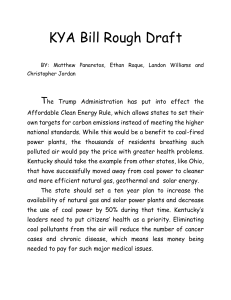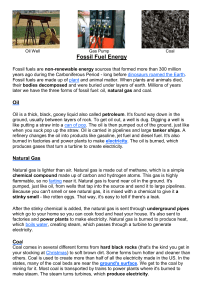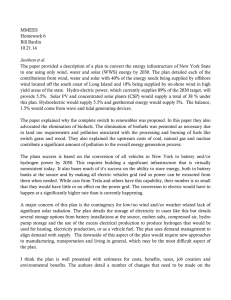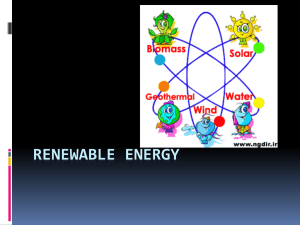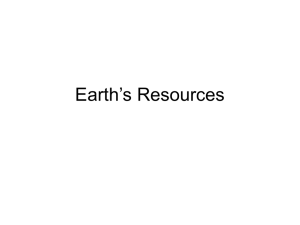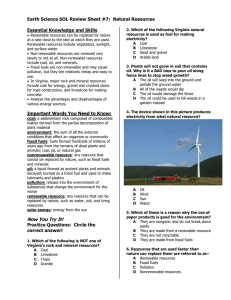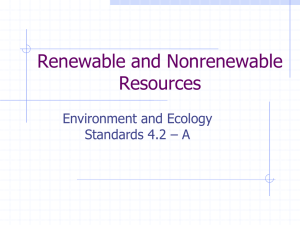Environmental Science Chapter 13 Test Study Guide Know the
advertisement
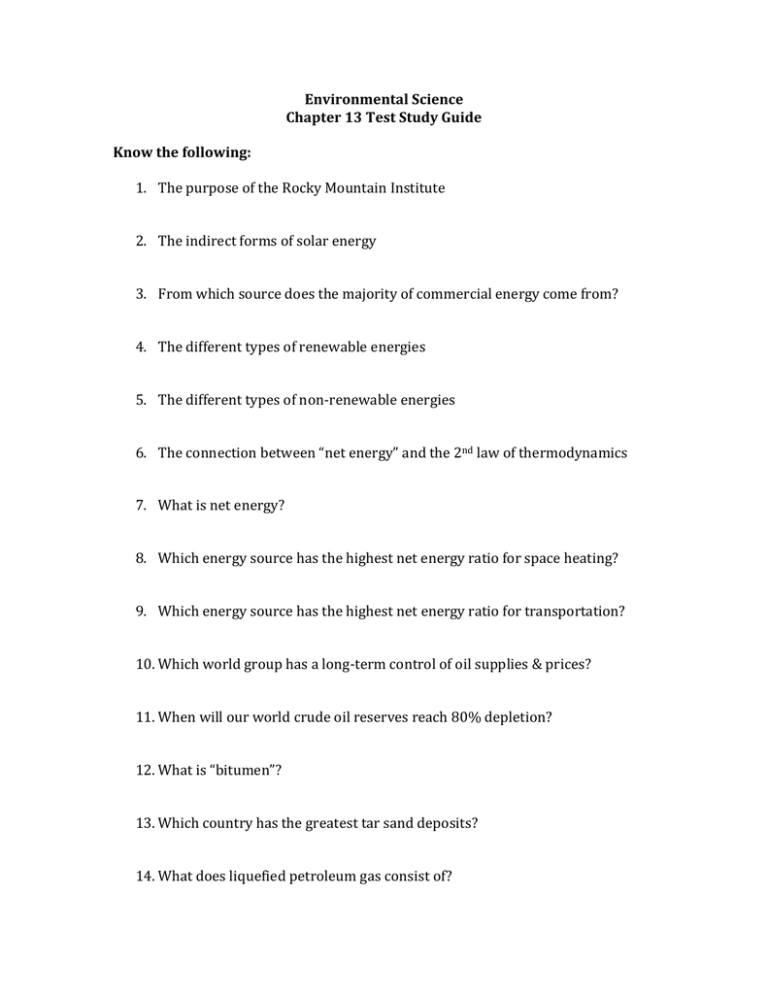
Environmental Science Chapter 13 Test Study Guide Know the following: 1. The purpose of the Rocky Mountain Institute 2. The indirect forms of solar energy 3. From which source does the majority of commercial energy come from? 4. The different types of renewable energies 5. The different types of non-renewable energies 6. The connection between “net energy” and the 2nd law of thermodynamics 7. What is net energy? 8. Which energy source has the highest net energy ratio for space heating? 9. Which energy source has the highest net energy ratio for transportation? 10. Which world group has a long-term control of oil supplies & prices? 11. When will our world crude oil reserves reach 80% depletion? 12. What is “bitumen”? 13. Which country has the greatest tar sand deposits? 14. What does liquefied petroleum gas consist of? 15. What is Kerogen, and what is it extracted from? 16. What percent of U.S. electricity comes from coal? 17. What is the world’s most abundant conventional fossil fuel? 18. How long will the worlds identifiable coal reserves last? 19. What type(s) of fuels can coal be converted over to? 20. What are “synfuels”, and what are their characteristics? 21. Why is nuclear power on the decline in the US?il 22. What percent of the world’s nuclear-generated electricity is from light-water reactors? 23. What is the useful operating life of today’s nuclear power plants? 24. What percent of commercial energy is wasted in the U.S.? 25. What would gas cost in the U.S. if hidden costs were added to the price? 26. General info about superefficient & ultralight cars 27. What effects would replacement of U.S. vehicles with plug in hybrids have? 28. Which large building (in your text) is considered to be energy-efficient ? 29. The list of things a building must have to be energy efficient. 30. The advantages of solar heating 31. Ways of cooling a house instead of using an air conditioner 32. Advantages of using solar cells 33. What is a photovoltaic cell? 34. The leading renewable energy source used to produce electricity today 35. The advantages of wind power 36. The region called the “Saudi Arabia of wind power” 37. The advantages of biofuel 38. General information about geothermal energy 39. The description of the chemical reaction of using hydrogen gas as fuel. 40. What is a soft energy path? 41. The 3 major forms of fossil fuels 42. The fastest-growing energy source 43. Which energy source is responsible for 1/3 of the toxic mercury emitted? 44. What does Brazil make its ethanol from?


